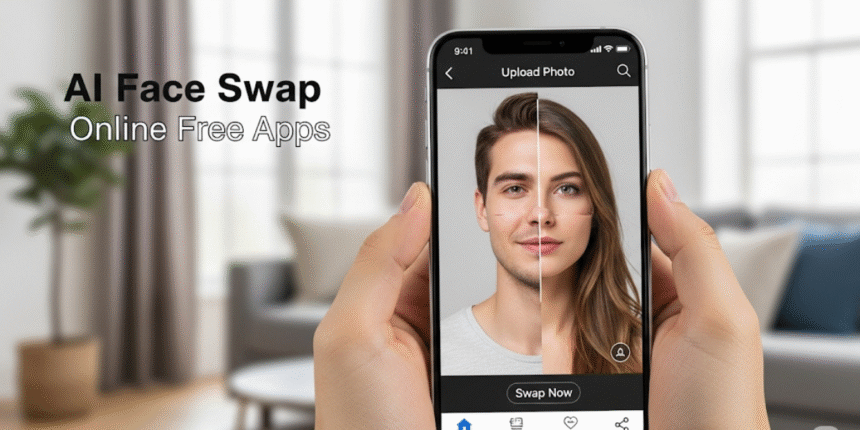Artificial Intelligence (AI) has transformed many aspects of digital media, from content creation to advanced image editing. One of the most fascinating innovations in recent years is the development of AI face swap online free apps, which allow users to instantly replace a face in an image or video with another. These tools have become popular for entertainment, memes, creative projects, and even professional use. But what technology powers these tools, and how do they work behind the scenes? Let’s explore the mechanics of AI-powered face-swapping and understand the processes that make it possible.
The Concept of AI Face Swapping
Face-swapping technology involves replacing the facial features of a person in an image or video with those of another person while maintaining natural expressions, lighting, and positioning. Traditionally, this required advanced photo or video editing skills using software like Photoshop or After Effects. However, AI and machine learning have made this process accessible to anyone with just a few clicks through AI face swap online free platforms.
These AI tools rely on deep learning models trained on vast datasets of human faces to understand the structure, features, and variations in facial expressions. Once trained, the AI can detect and extract a face from a source image and blend it seamlessly onto a target image or video.
How AI Detects and Maps Faces
The core technology behind AI face swap tools starts with face detection algorithms. These algorithms use computer vision models such as Convolutional Neural Networks (CNNs) to identify the location of a face within an image. Key points like the eyes, nose, mouth, and jawline are mapped using facial landmark detection models.
Once these points are identified, the AI creates a mesh or mapping framework of the face. This framework acts like a blueprint, allowing the AI to understand the structure of the source face and match it accurately to the target face’s position, size, and orientation.
Deepfake Technology and Neural Networks
Most advanced AI face swap online free apps rely on techniques similar to deepfake technology. Deepfakes use Generative Adversarial Networks (GANs) a machine learning architecture where two neural networks, the generator and the discriminator, compete with each other.
- The generator tries to create realistic swapped faces.
- The discriminator evaluates whether the generated image looks real or fake.
Through repeated training, the generator becomes highly skilled at producing face-swapped images or videos that look natural and convincing.
The Role of Autoencoders in Face Swapping
Another common approach in AI face-swapping is autoencoder neural networks. An autoencoder compresses facial features into a compact representation and then reconstructs them. For face-swapping, two autoencoders are trained one for the source face and another for the target face.
When swapping, the source face is encoded and then decoded using the target face’s decoder, resulting in a face that retains the target’s expressions but with the source’s identity. This method works especially well for video-based face-swapping.
Image Blending and Post-Processing
Once the AI generates the swapped face, it must blend it seamlessly with the surrounding image or video frame. This involves:
- Color matching: Adjusting skin tones and lighting to match the target image.
- Edge smoothing: Removing sharp boundaries between the swapped face and the target background.
- Expression syncing: Ensuring that the swapped face reflects the same expressions and emotions as the target.
Advanced AI tools often include real-time processing, making it possible for users to see live previews of the face swap.
Cloud Computing and Accessibility
The reason many AI face swap online free tools can deliver results so quickly is that they rely on cloud computing. When a user uploads an image or video, the data is processed on powerful remote servers equipped with GPUs optimized for deep learning tasks.
This cloud-based approach eliminates the need for high-end hardware on the user’s device, making AI face-swapping accessible to anyone with an internet connection.
Applications of AI Face Swap Technology
While the most common use of face-swapping is entertainment such as inserting oneself into a movie scene or creating fun social media posts the technology also has professional applications:
- Film production: Replacing stunt doubles’ faces with actors in post-production.
- Marketing: Creating personalized advertisements with customer faces.
- Education: Demonstrating historical events with realistic re-creations of historical figures.
However, with great potential comes the need for ethical considerations, especially to prevent misuse for misinformation or non-consensual content.
Ethical and Privacy Considerations
The ease of creating realistic face swaps has raised concerns about digital identity theft, fake news, and harassment. Ethical AI face swap online free platforms often implement safeguards such as watermarking, usage restrictions, and moderation to prevent harmful use.
Users should also be aware of privacy implications, as uploading personal images to online platforms could expose them to misuse if proper security is not in place.
The Future of AI Face Swapping
As AI technology continues to advance, we can expect even more realistic and efficient face-swapping capabilities. Future developments may include:
- Real-time high-resolution video swaps.
- More accurate facial expression mapping.
- AI models that work entirely offline for enhanced privacy.
With these innovations, the challenge will be balancing creative freedom with responsible and ethical use.
Also Read: Nexus AlienSync


